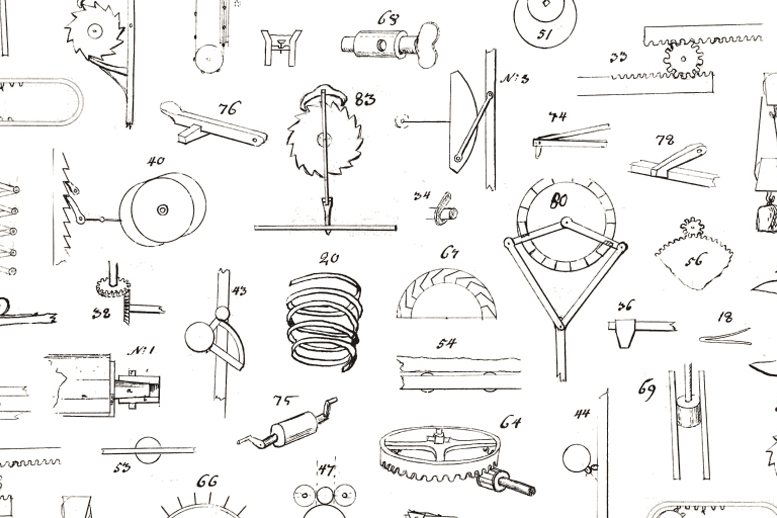The five vowels of the Christopher Polhem’s mechanical alphabet (1700), the lever, the wedge, the screw, the pulley, and the winch are but one example of the mechanistic order of knowledge during the 18th century. This alphabet is too the seed for the industrial age. A seed constituted of a set of discrete blocks that assembled in various forms generate endless mechanisms and machines either to mimic nature and to create new natures. These discrete elements are drawn from the alphabet and written culture. Ideas are broken down to sentences, words, and ultimately letters. The alphabet is the first component in the mechanisation of thought.

Polhem’s mechanical Alphabet. Carl Johan Cronstedts Sketch 1729.Taken from: http://www.tekniskamuseet.se/images/200.b5a031e137ef868dbc3c5c/1339758196732/Cronstedt+dig22814_hb.jpg
This mechanical alphabet was used in teaching at the Laboratorium mechanicum – Sweden´s first school of technology
UPDATE: https://artsandculture.google.com/exhibit/christopher-polhem-%E2%80%93-a-pioneer-and-a-technological-genius-tekniska-museet/ygISOQq_pem4IQ?hl=en
